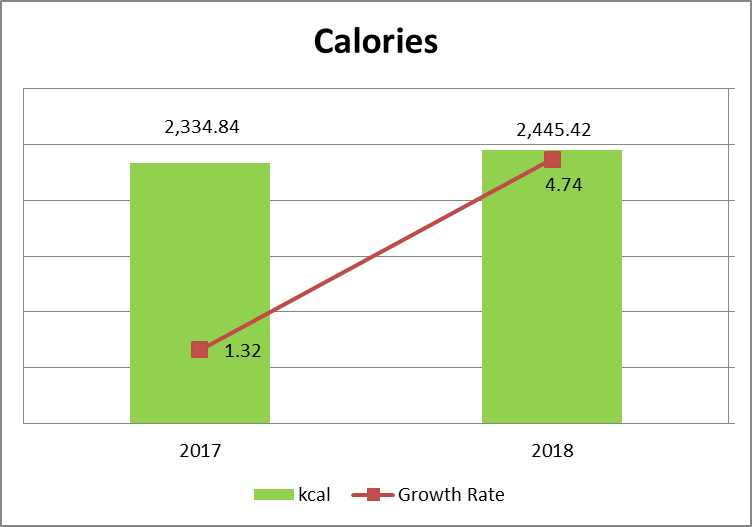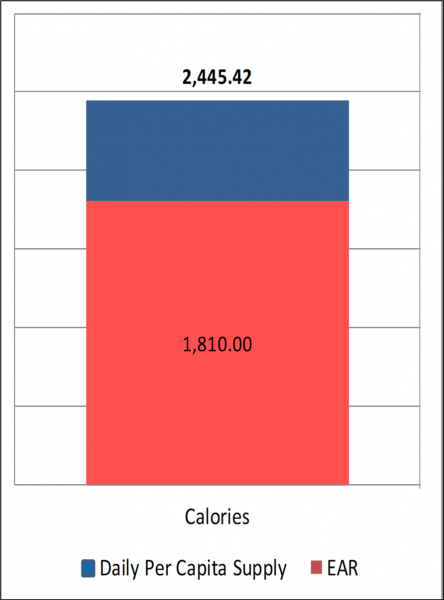The Food Balance Sheet (FBS), compiled by the Philippine Statistics Authority (PSA), is an aggregated and analytical data set that presents a comprehensive picture of the pattern of a country’s food supply during a specified reference period.
 Calories
Calories
In 2018, the daily per capita supply of calories from all food products at 2,445.42 kilocalories was 4.74 percent higher than the previous year’s level. Compared to the Estimated Average Requirement (EAR) of 1,810.00 kilocalories based on the results of Food and Nutrition Research Institute of the Department of Science and Technology (FNRI-DOST) 8th National Nutrition Survey in 2013, the daily per capita supply of 2,445.42 kilocalories was enough to support the daily nutrient requirement as indicated by the adequacy ratio of 135.11 percent. Cereals (excluding beer) which accounted for 57.49 percent of the total daily per capita supply of calories went up by 5.97 percent.It also showed adequacy in the daily nutrient requirement for calorie which was recorded at 114.39 percent.
 Proteins
Proteins
In the case of protein, per capita food supply was estimated at 78.71 grams per day or a 3.03 percent gain from the previous year’s record. It registered a 139.31 percent adequacy ratio for the daily per capita supply of protein in 2018. Among food groups, cereals (excluding beer) recorded the highest share to the total daily per capita supply of protein at 38.76 percent. This was followed by meat at 21.43 percent and fish and sea food at 20.13 percent. These food groups registered more than 100 percent adequacy ratios in the daily per capita supply of protein.
Fats
The daily per capita food supply of fats grew by 10.77 percent in 2018. It was estimated at 60.07 grams per day. Oilcrops at 16.94 grams and meat at 12.20 grams contributed 48.51 percent to the total daily per capita supply of fats.
Self-Sufficiency Ratio (SSR)
In 2018, the country’s estimated Self-Sufficiency Ratio (SSR) for the aggregated food was 79.43 percent. This indicates that 79.43 percent of the food supply came from the domestic production.
Import Dependency Ratio (IDR)
The Import Dependency Ratio (IDR) of food was estimated at 29.16 percent this year. This means that 29.16 percent of the available supply of food was sourced from imports.
(Sgd.) CLAIRE DENNIS S. MAPA, Ph.D.
Undersecretary
National Statistician and Civil Registrar General
 Calories
Calories Proteins
Proteins